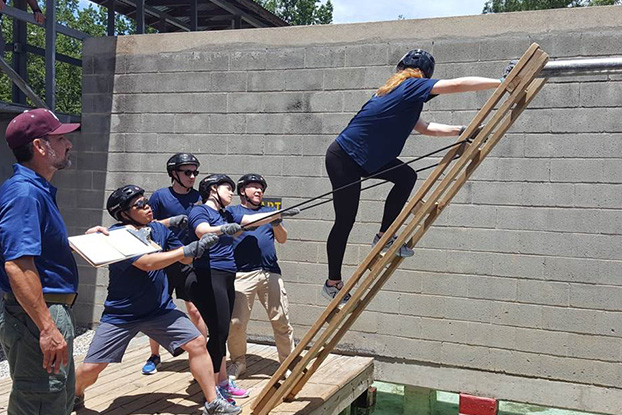Anandhi Bharadwaj has been working in information technologies and systems, both as an executive and as a researcher, for more than three decades. Over the course of her career, she has experienced the rise of the internet and successive tsunamis of digital disruption from mobile devices to artificial intelligence, giving her privileged insight and perspective on the mutable world of information technology.
She began her career as a consultant with NIIT, a global technology consulting and outsourcing firm, before pursuing a Ph.D. in management information systems at Texas A&M University—a move that eventually led her to Goizueta Business School and the Goizueta Endowed Chair in Electronic Commerce, which she currently holds.
Bharadwaj’s research explores the organizational impacts of information technology, digital innovation and the business value of IT. An extraordinarily prolific researcher, since 1990 she has published more than 70 papers. In 2018 Bharadwaj was awarded the INFORMS ISS Distinguished Fellow Award in recognition of her outstanding contribution and intellectual stewardship in the field of information systems. Starting in 2020, she will serve as vice dean of faculty and research at Goizueta.
EB: How did you become interested in researching information systems, and how would you characterize the focus of your research?
Bharadwaj: I started my career in India when computerization was just starting to take hold. This was an exciting time, as organizations were beginning to see the potential in automating their processes. Making the switch from industry into academia, I was energized by the same optimism about the potential of technology to impact business, but I wanted to dig deeper into the kinds of applications and implementation challenges that organizations were experiencing.
Doing my Ph.D. in the ’90s, I became engaged in a larger conversation around the productivity benefits of information systems. Corporations had been making sizable investments in hardware and software, including training, but were yet to see the payoff in the form of productivity gains. It was a puzzle for academics and economists that struck a chord with me. What I’d seen at a micro level in a few organizations I’d worked with seemed to be playing out on a macro level—that it takes years before you see the benefits of your investment because of the kinds of learning curves, the new skills and processes and the cultural recalibration that have to happen before you can truly leverage new technologies.
This became a question of interest to me that has underscored my research ever since: What’s behind this time lag in the productivity benefits of technology? And why do some companies do it better than others? Over time it has led me to reframe the research—to shift the focus from the economic and productivity gains per se to the kinds of technical and organizational capabilities that companies need to build to extract the business value of IT systems.
EB: What kinds of key insights has your research generated?
Bharadwaj: I have found that there is an almost universal complexity that organizations have to grapple with when introducing technology at scale. And it’s pan-industrial.
A good example is the U.S. healthcare industry. A whole decade after the introduction of the Affordable Health Care Act of 2008, hospitals are still struggling to implement a unified view of patient care. And their challenges are not that different from the challenges experienced by companies back in the early ’90s. From the organizational perspective, you’re looking at a set of almost immutable challenges that span every sector: change management, inertia, even active resistance to new ways of doing things.
Then you have to factor in the speed of innovation with new and emerging technologies and the adoption and adaptation processes that organizations have to go through before the benefits kick in—often the technologies have to be recalibrated to meet business needs. Some industries and some organizations tend to be faster and better at introducing and leveraging new technologies.
EB: What does your research tell you about this? What makes some firms more agile in adopting and adapting to new technologies?
Bharadwaj: I’ve published papers on what distinguishes agility. One of the key factors we’ve found that determine the pace and success of technology management is the role of the senior leadership, not only in being alert to new opportunities created by technological changes, but also having the commitment to follow through with the change management efforts.
A common mistake that leaders make is assuming that their role ends when they make the investment decisions. There’s an assumption that middle management will drive implementation and that change will automatically ripple through the organization. Added to that, there’s a frequent lack of foresight about the training that employees need—that and an inability to manage the fear people might feel about losing their jobs to automation or outsourcing. These are really big organizational challenges, and senior management can’t afford to take their eye off the ball.
Agile leaders are those who have a vision—a vision of how technology is going to impact their industry so that they aren’t caught flat-footed and unable to adjust when things reach a tipping point. They also have a vision of how technology will impact their firm. Agility comes when you have leaders who have this sense-making perspective and the operational capacity to absorb change and work with it.
EB: You take up your new role as dean of faculty and research in 2020. What are your thoughts on the role of research? How important is it to research technology and its impact?
Bharadwaj: I am excited to start in this new role, and it is an honor to work with such a talented group of faculty engaged in creative research and teaching. Research is fundamental to what we do as scholars and educators. Research is how new knowledge gets created, which then finds its way into classrooms through lectures and teaching materials.
As business school faculty, it is important for us to stay abreast of technological changes and understand their impact on organizations and society at large. Engaging with these themes, unearthing patterns and gaining insight informs what happens in the classroom and how we educate our students.
So there is a lot of synergy between what we research and what we then take into the classrooms to educate the next generation of managers and leaders.











